It is early, pre-dawn, and the sky is just lightening in the east when you arrive. You park your car, gather your optical 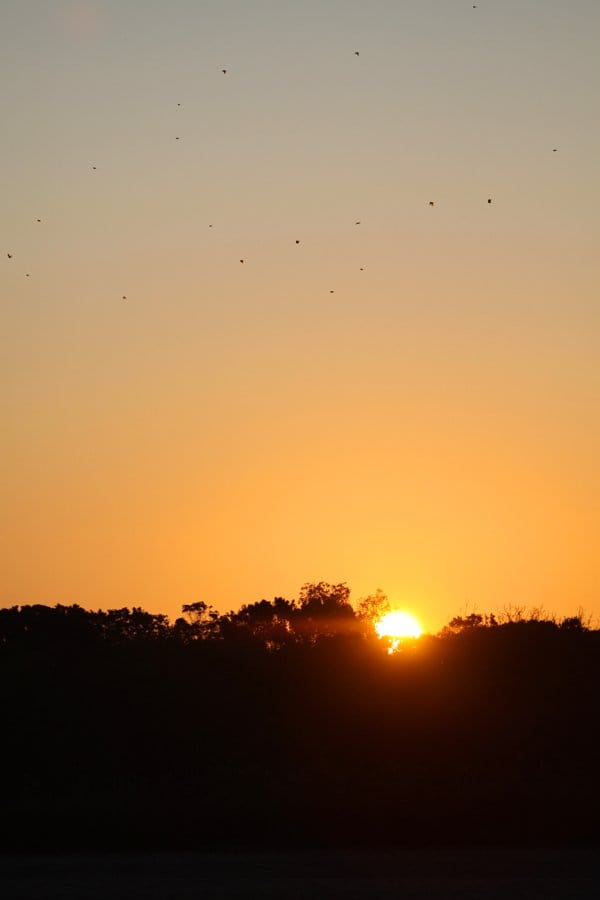 equipment, take a last gulp of glorious coffee, and get out of your car. The whole area is alive with movement and chip notes but you can’t take the time to figure out what it is you are hearing and barely seeing because you have an even more difficult birding challenge ahead of you. You are about to climb up onto the dike at Higbee Beach Wildlife Management Area and witness the morning flight. Once you get up there you are on hallowed ground for the birding world and you are facing some of the most challenging birding that you can find.
equipment, take a last gulp of glorious coffee, and get out of your car. The whole area is alive with movement and chip notes but you can’t take the time to figure out what it is you are hearing and barely seeing because you have an even more difficult birding challenge ahead of you. You are about to climb up onto the dike at Higbee Beach Wildlife Management Area and witness the morning flight. Once you get up there you are on hallowed ground for the birding world and you are facing some of the most challenging birding that you can find.
Perhaps the pinnacle of modern birding, the morning flight at Higbee Beach is brutal. If the winds are right the birds come over in huge numbers and quickly, giving observers scant seconds to identify them. Because most birders are used to identifying perched passerines most are not prepared to identify, say, a fly-by Blackpoll Warbler. But there are those that can, and they often become official morning flight counters for the Cape May Bird Observatory’s Morning Flight Count. What is a morning flight? A morning flight occurs during migration, when birds land where the dawn finds them. Once they land they have to find good habitat that fits their foraging needs, so they therefore fly off to find it. At coastal sites birds often end up concentrated after a night of migration and likely only have one option in terms of what direction to go so the phenomenon is more easily observed. The dike at Higbee Beach WMA, which is an earthen berm that stretches east-west across the typical morning flight path and towers above the landscape, is perfectly situated to provide a great look at the birds as they go past. And do they ever go past!
birders on the dike at Higbee Beach before sunrise
Call notes, flight style, shape of tail, length of wing, and overall jizz are all buzzing through the heads of the birders on the dike as the birds blow by. On my visit, which was on Sunday morning, 23 October 2011, the most common birds were yellow-rumps, robins, and flickers. But a host of other birds were present as well, including Sharp-shinned Hawks, Cooper’s Hawks, and Bald Eagles; American Pipits, Red-headed Woodpecker, Yellow-bellied Sapsucker, and Red-bellied Woodpecker; a single Pine Siskin; two Dickcissels; Blackpoll and Black-throated Blue Warbler; and Eastern Meadowlarks, Red-winged Blackbirds, and Brown-headed Cowbirds. Dark-eyed Juncos and Ruby-crowned Kinglets made their way through low, hugging or traveling through the phragmites and a Brown Creeper called from a tree halfway up the dike.
Northern Flicker in flight at Higbee Beach
Yellow-rumped Warbler in flight at Higbee Beach
The counter, of course, does not count every single bird. He only counts and records those birds that are traveling north, cross the dike, and don’t immediately turn around and come back over the dike. He has a couple of clickers to keep count of the more numerous birds and is constantly noting down other species. While I was there, Tom Johnson, a friend of a friend, was the counter, and I was consistently amazed at how quickly he could identify and record birds, and, once the crowd thinned out, answer questions about how he was making the identifications he was making. Just watching him bird and hearing his explanations was like an advanced workshop in birding.
Get yourself to Cape May! And get out to Higbee Beach WMA in the early dawn hours and see and do birding at the highest possible level. You won’t regret it, even on a day with few birds, because you will learn just how good birders can get. And that is inspiring and awesome and will make you want to make yourself a better birder.
Red-headed Woodpecker at Higbee Beach WMA
…

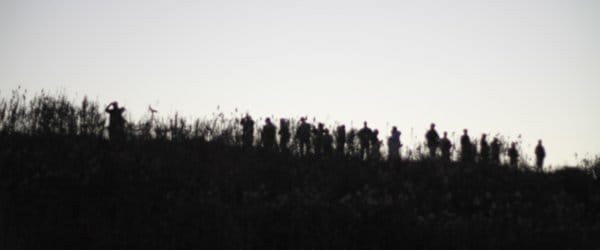
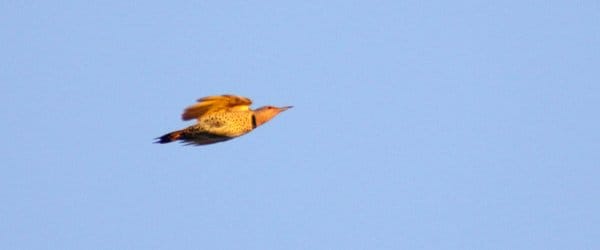
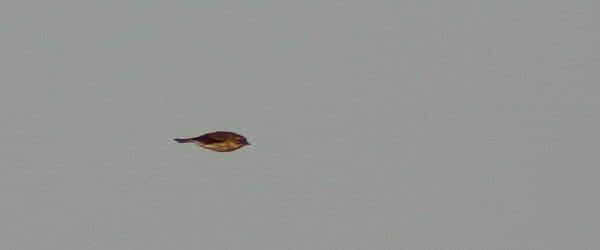
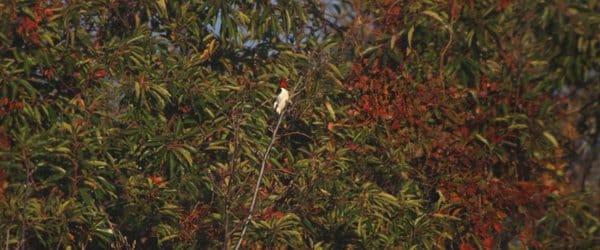










Thanks for writing this Corey! I’m a friend of Tom’s and have been itching to ask him the procedure for this.
Are Tom Johnson’s answers as to how he was making his identifications and your full interview upcoming….?
Sounds like a lame day at Ann Arbor’s Arboretum. 😉
@Brad W: No problem.
@Brian Padden: Sorry, that is proprietary information. Either that, or I just didn’t understand it.
@Jochen: Man, you need to get back to the states for a visit.